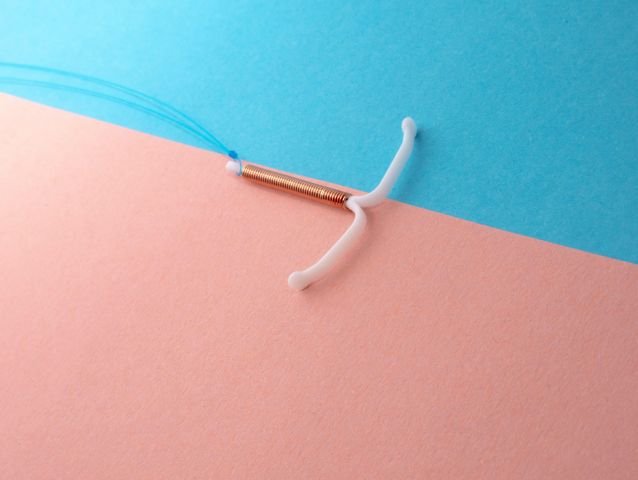
Hormonal Birth Control and Vulvodynia – Part 2: Hormonal Intrauterine Devices (IUD)
This article takes a looks at intrauterine devices (IUDs) and it’s potential effect on vulvodynia, or vulvar pain.
Intrauterine devices, also called long-acting reversible contraceptives (LARC), have become more and more popular as a birth control method in the United States due to high efficacy, less side effects and higher continuation compared to other hormonal contraceptive methods1,2,6. They are offered in two forms; hormonal (common brand names are Mirena, Kyleena, Skyla, Liletta) and copper IUDs. For this blog, we will be exploring the effects of the hormonal IUD only. This type of IUD releases progestin into the body which suppresses endometrial cell growth (called proliferation) and thickens the cervical mucus to prevent pregnancy4.
I consider myself to be a case study when it comes to the topic of hormonal birth control and pelvic pain. I have tried several variations of the combo pill, progestin only pill, the Mirena IUD and most recently, the Nuvaring. When taking the combination methods, I definitely noticed the side effects previously mentioned in my last blog post. However, in my early twenties, when I was on the Mirena (hormonal IUD), I didn’t notice any of these side effects.
Does the hormonal IUD have less of an association with vulvodynia than combination birth control methods? I know what I felt, but what does the research say?
A recent systematic review (meaning a summary of all current studies on a certain topic) explored the effects of hormonal and copper IUDs on female sexual dysfunction. Outcomes studied included: desire, arousal, lubrication, orgasm, satisfaction, and pain with sex. Across all studies in the review, the most consistently improved category with the IUD was pain with sex4. Although the articles did not specify the type of pain the subjects were having, we can include vulvodynia in this category, as this is a type of pain with sex. Consistently across studies there was either no impact on sexual function or an improvement in pain and sexual desire3,4.
Currently, there are no papers published looking specifically at the relationship between vulvodynia and IUDs. However, as the mechanism of the intrauterine device does not impact overall circulating sex hormone levels as the pill does5, in theory, this device should not cause the tissue to be thinner and more at risk for developing vulvodynia, as previously discussed in my last post. However, if symptoms of vulvodynia develop following insertion of an IUD and begin to affect your quality of life, it is worth discussing with your physician to look into non-hormonal birth control options.
In the meantime, we are more than happy here at Femina PT to assess and treat your symptoms of vulvodynia. At Femina Physical Therapy, all of our physical therapists have specialized training to address the musculoskeletal components of your pain and will work with your other healthcare providers in a collaborative manner to maximize symptom-relief and improve your quality of life. Reach out to our team to get started.
Interested to learn more? Click here to read Part 1 and Part 3.
Resources
- Aoun J, Dines VA, Stovall DW, Mete M, Nelson CB, Gomez-Lobo V. Effects of age, parity, and device type on complications and discontinuation of intrauterine devices. Obstet Gynecol. 2014;123(3):585-592. doi:10.1097/AOG.0000000000000144
- https://www.acog.org/clinical/clinical-guidance/practice-bulletin/articles/2017/11/long-acting-reversible-contraception-implants-and-intrauterine-devices
- de Castro Coelho F, Barros C. The Potential of Hormonal Contraception to Influence Female Sexuality. Int J Reprod Med. 2019;2019:9701384. Published 2019 Mar 3. doi:10.1155/2019/9701384
- Ogle K, Handy AB. The Effects of Hormonal and Non-Hormonal Intrauterine Devices on Female Sexual Function: A Systematic Review. Int J Sex Health. 2023;35(1):67-81. Published 2023 Jan 11. doi:10.1080/19317611.2022.2155898
- Rose S, Chaudhari A, Peterson CM. Mirena (Levonorgestrel intrauterine system): a successful novel drug delivery option in contraception. Adv Drug Deliv Rev. 2009;61(10):808-812. doi:10.1016/j.addr.2009.04.022
- Usinger K, Gola S, Salas M, Smaldone A, Intrauterine Contraception Continuation in Adolescents and Young Women: A Systematic Review, Journal of Pediatric and Adolescent Gynecology (2016), doi: 10.1016/j.jpag.2016.06.007
More Articles in This Series
{modulepos position=”birthcontrol”}
